RESEARCH
- CONCEPT
- MOTTO
- PROJECT
- PUBLICATION
- MESSAGE
CONCEPT
We are working on basic science thoroughly to understand biological phenomenon at molecular level. One of our missions is to apply our knowledge to medical fields in future. We can classify our research to 3 stages.
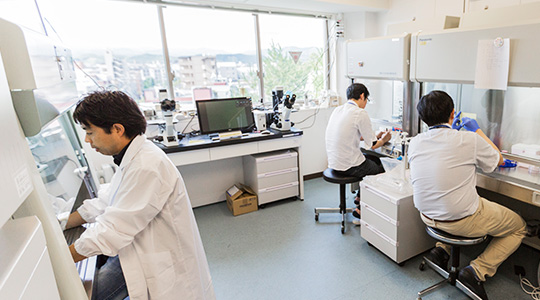
The 1st stage is to explore new fields by focusing on a specific biological phenomenon of interests. During this period, you are required to be challenging, brave, patient, and creative. Primarily, you need to decide which biological phenomenon you are researching on among many research themes, and then, you will think how you approach the important biological questions. To my opinion, this process reflects characteristics of each researcher. We prefer establishing a new experimental system and perform screening to answer the biological questions. It is important to obtain the right answer to your questions, but you may also discover something new unexpectedly (called serendipity) during this period. When you have the good fortune to find the right answer, you will be able to see many biological phenomenon with different points of view.
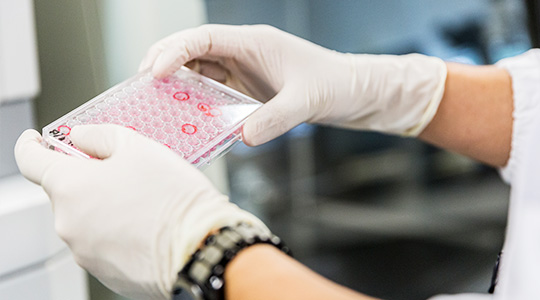
The 2nd stage is to develop your primary finding. Based on your own finding, you can rethink about unsolved biological questions and extend your interests by researching with novel ideas. In addition, once you find the answer to your question, you will find another questions to be solved. When you work on these questions, you will understand the biological phenomenon with your interest more deeply.
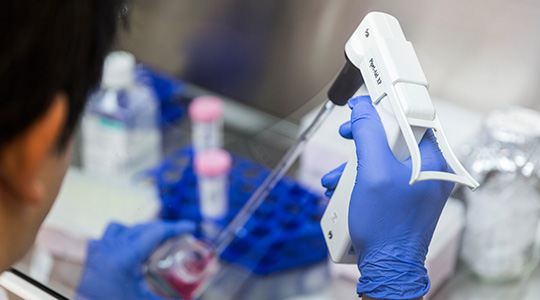
The 3rd stage is to think how your finding is applicable. We believe that most interesting point in biology is to essentially understand the biological phenomenon, which motivates us to research. Simultaneously, you are required to think how you can apply your understanding to medical fields: mechanisms of disease onset, diagnosis, treatment of diseases, or health maintenance. Furthermore, it is important to consider whether you can develop novel technologies with your knowledge based on your findings. During this period, it might be necessary to work with researchers in pharmaceutical companies and in different fields. To achieve these goals, we would like to work with highly motivated students or researchers with variety of backgrounds and research experiences. We think enthusiasm is the most important driving-force to progress research. Please join our laboratory if you are interested in.
MOTTO
We promote science with originality that inspire others.
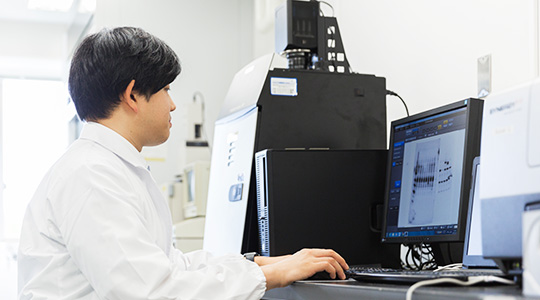
We think originality is the most critical factor in basic research. Research with originality means that your research is unique in the research field and other scientists recognize your research. We want to develop our lab so that everyone can imagine what we are working on. Then, the question is how you can progress research with originality. This is still our subject to consider, but we think that one of the approaches is to work on something new which few people are working on.
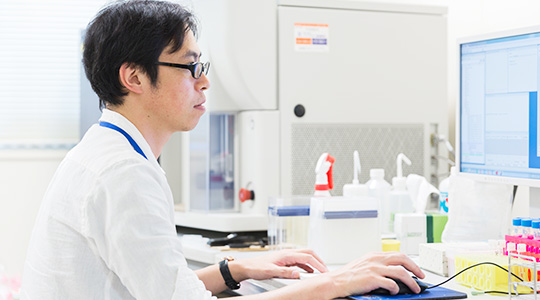
For example, the research filed in phospholipid scrambling has been recognized important for 30 years, but not many people were working on and its molecular mechanism were completely unknown. We identified the genes involved in phospholipid scrambling for the first time, and now based on our finding, variety of research with different aspects is going on in the world. In other words, research with originality can impact on and spread to the research field. This fact is most valuable and can explain to the society why we are working on basic science. In addition, because our identified genes and their related research can be applicable to drug development, patent applications were made. In this meaning, the basic research can contribute to innovation. To show originality, it is also possible to work on the scientific questions, which many people have been already working on, by unique approaches. You can also research in the mature fields by introducing novel techniques or ideas. We will devote ourselves to science while recognizing the importance of originality and will enjoy science while feel excited about unexpected findings.
PROJECT
Bringing a unique approach to researching the many mysteries of science.
Dr. Jun Suzuki was working on how normal cells become cancer cells during his Graduate School. Now, his laboratory is focusing on immature fields, but not on established competitive fields. Harboring to perform research with originality, Dr. Suzuki lab reached the field of lipid dynamics on plasma membranes through that of cell death. This filed is very important in biological and medical sciences but still less knowledge is obtained. As lipid dynamics is significant in variety of tissues in our bodies such as brain, bone, muscle, intestine, reproductive organs, and blood systems and their defect causes genetic diseases, we believe that basic research in lipid dynamics will develop and extend more in future. Now, we are especially interested in the projects described below
1.Phospholipid Scrambling
Phospholipids on plasma membranes are asymmetrically distributed, among which phosphatidylserine (PS) is restricted to the inner side of the membranes. However, this asymmetry is collapsed on many physiological situations and PS is exposed on the cell surface. Exposed PS in activated platelets functions as a scaffold for activation of coagulation factors while that in apoptotic cells functions as an “Eat-me signal” to be engulfed by phagocytes. The PS-exposing protein was termed as scramblase, but its molecular identity has been unknown for long time. Dr. Suzuki started researching to identify the scramblases and identified TMEM16F as a calcium-dependent PS-exposing protein to stop bleeding (Suzuki et al., 2010 Nature) and Xkr8 as a caspase-dependent PS-exposing protein to promote engulfment by phagocytes (Suzuki et al., 2013 Science). TMEM16F belongs to TMEM16 family which consists of 10 members, while Xkr8 belongs to Xkr family, which consists of 9 members. Among these members, we found that some members also functioned as scramblases. (Suzuki et al., 2013 J Biol Chem; Suzuki et al., 2014 J Biol Chem). Furthermore, their mutations cause human genetic diseases. We also identified the type I membrane proteins Basigin and Neuroplastin as subunits of Xkr8 (Suzuki et al., 2016 PNAS), while other groups identified the type II membrane protein Kell as a subunit of Xkr1. It is notable that subunits of other members are still unknown. We will reveal the function of scramblases from variety of direction.
2.”Eat-me” signal in Neuroscience
Many neuronal cells are born in embryonic brain during development, about half of which become dead by apoptosis, while many cells are rarely dead in adult brain. There, part of living neuron such as synapses, dendrites, and axons are removed and simultaneously new structures are built to create neuronal network. Furthermore, in retinas, part of rod outer segments are eaten by retinal epithelial cells to maintain their function. It has been suggested that this “Scrap & Build” system requires “Eat-me” signal-mediated engulfment by phagocytes, but its molecular mechanism has been mostly unknown. Now we are working on mechanisms of displaying “Eat-me” signal at molecular levels. In neuronal diseases, especially Alzheimer's disease, other group reported that synapses are removed by glial cells before neuronal cells become dead. We will perform the basic research of these processes while thinking of application to clinical.
3.Screening
Some people say that important genes were mostly identified, but is it true? For example, molecular identity of scramblases in ER or Golgi is still unknown. Most of scramblases functioning on plasma membranes are also unknown except for those functioning during platelet activation or apoptotic cell death. To identify critical genes for the biological phenomenon with interests, it is the best way to establish novel experimental systems and perform the screening. At present, we have applied next four approaches to identify functional genes involved in the biological phenomenon of interests.
- A. Expression Cloning:We have constructed cDNA library from the interesting cells or tissues, integrated it into the retroviral vector, and expressed in host cells to identify the genes that give the specific phenotype to the host cells.
- B. Genetic Screening:Utilizing CRISPR/Cas9 and sgRNA library in mammalian cells, we randomly knockout most of genes in each cell and identify the specific genes involved in the biological phenomenon with interests.
- C. Biochemical Screening:We have overcome some difficulties identity binding proteins of the desired proteins. Using this improved systems, we will identify the specific subunits or the binding partners of the proteins with interests.
- D. Drug Screening:We have accumulated the knowledge and technique to identify the specific factors from the randomized candidates. Utilizing this know-how to drug screening, the specific chemicals to regulate the biological phenomenon with interests can be identified.
Once we identify the interesting genes, we will perform the functional analysis.
4.Interdisciplinary Approach
We belong to iCeMS with many scientists whose specialty is in biology, chemistry, materials, physics, mathematics and so on. This stimulates us a lot because we previously researched in the research institutes where the specialty of many researchers are biology and medicine. Through talking with the scientists with different backgrounds, we have got novel ideas how we approach our biological questions. Especially, we performed experiments using well-established chemicals or materials before, but now we think it is possible to design experimental systems by establishing novel chemical or materials. We have started collaboration with other scientists in different backgrounds to understand our research interests at much deeper level.
PUBLICATION
Our published papers and their explanation could be described.
-
2024/09/16PUBLICATION
Noguchi Y, Maruoka M, Suzuki J. Protocol for in vivo CRISPR screening targeting murine testicular cells. STAR Protoc 2024 September 12;5;103306. doi: https://doi.org/10.1016/j.xpro.2024.103306.
-
2024/08/31PUBLICATION
Niu H, Maruoka M, Noguchi Y, Kosako H, Suzuki J. Phospholipid scrambling induced by an ion channel/metabolite transporter complex. Nat Commun 2024 August 31;15;7566. doi: https://doi.org/10.1038/s41467-024-51939-w.
-
2024/05/01PUBLICATION
Noguchi Y, Matsui R, Suh J, Dou Y, Suzuki J. Genome-wide screening approaches for biochemical reactions independent of cell growth. Ann Rev Genomics Hum Genet. 2024 May 1;25;17.1-17.26. doi: 10.1146/annurev-genom-121222-115958. PMID: 38692586.
-
2024/03/27PUBLICATION
Noguchi Y, Onodera Y, Miyamoto T, Maruoka M, Kosako H, Suzuki J. In vivo CRISPR screening directly targeting testicular cells. Cell Genom. 2024 Mar 13;4(3):100510. doi: 10.1016/j.xgen.2024.100510. Epub 2024 Mar 5. PMID: 38447574; PMCID: PMC10943590.
-
2023/09/11PUBLICATION
Zhang, P., Maruoka, M., Suzuki, R., Katani, H., Dou, Y., Packwood, D. M., Kosako, H., Tanaka, M., Suzuki, J. (2023). Extracellular calcium functions as a molecular glue for transmembrane helices to activate the scramblase Xkr4. Nat Commun 14: 5592. https://doi.org/10.1038/s41467-023-40934-2
-
2023/03/16PUBLICATION
Gyobu-Motani, S., Yabuta, Y., Mizuta, K., Katou, Y., Okamoto, I., Kawasaki, M., Kitamura, A., Tsukiyama, T., Iwatani, C., Tsuchiya, H., Tsujimura, T., Yamamoto, T., Nakamura, T., & Saitou, M. (2023). Induction of fetal meiotic oocytes from embryonic stem cells in cynomolgus monkeys. The EMBO journal, e112962. https://doi.org/10.15252/embj.2022112962
-
2021/03/15PUBLICATION
Maruoka M, Zhang P, Mori H, Imanishi E, Packwood DM, Harada H, Kosako H, Suzuki J. (2021) Caspase cleavage releases a nuclear protein fragment that stimulates phospholipid scrambling at the plasma membrane. Mol Cell 81:1397-1410.
-
2021/01/18PUBLICATION
Maruoka M, Suzuki J. (2021) Regulation of phospholipid dynamics in brain.Neurosci Res 167:30-37.
-
2017/06/30PUBLICATION
Gyobu S, Ishihara K, Suzuki J, Segawa K, Nagata S. (2017) Characterization of the scrambling domain of the TMEM16 family. Proc Natl Acad Sci USA 114: 6274-6279
-
2016/08/23PUBLICATION
Suzuki J, Imanishi E, Nagata S. (2016) The Xkr8 phospholipid scrambling complex in apoptotic phosphatidylserine exposure. Proc Natnl Acad Sci USA 113: 9509-9514.
-
2016/06/23PUBLICATION
Nagata S, Suzuki J, Segawa K, Fujii T. (2016) Exposure of Phosphatidylserine on the Cell Surface. Cell Death Differ, 23: 952-961.
-
2016/06/14PUBLICATION
Ishihara K, Suzuki J, Nagata S. (2016) Role of Ca(2+) in the Stability and Function of TMEM16F and 16K. Biochemistry, 55: 3180-3188.
-
2015/12/14PUBLICATION
Gyobu S, Miyata H, Ikawa M, Yamazaki D, Takeshima H, Suzuki J, Nagata S. (2015) A role of TMEM16E carrying a scrambling domain in sperm motility. Mol Cell Biol 36: 645-659.
-
2014/11/28PUBLICATION
Takatsu H, Tanaka G, Segawa K, Suzuki J, Nagata S, Nakayama K, Shin HW. (2014) Phospholipid Flippase Activities and Substrate Specificities of Human Type IV P-type ATPases Localized to the Plasma Membrane. J Biol Chem, 289: 33543-33556.
-
2014/10/01PUBLICATION
Segawa K, Suzuki J, Nagata S. (2014) Flippases and scramblases in the plasma membrane. Cell Cycle, 13: 2990-2991
-
2014/05/14PUBLICATION
Suzuki T, Suzuki J, Nagata S. (2014) Functional swapping between TMEM16A and TMEM16F. J Biol Chem, 289: 7438-7447.
-
2014/01/01PUBLICATION
Suzuki J, Nagata S. (2014) Phospholipid scrambling on the plasma membrane. Methods Enzymol, 544: 381-393.
-
2014/01/01PUBLICATION
Suzuki J, Imanishi E, Nagata S. (2014) Exposure of phosphatidylserine by Xk-related protein family members. J Biol Chem, 289: 30257-30267.
-
2013/01/01PUBLICATION
Suzuki J, Fujii T, Imao T, Ishihara K, Kuba H, Nagata S. (2013) Calcium-dependent phospholipid scramblase activity of TMEM16 protein family members. J Biol Chem, 288: 13305-13316.
-
2013/01/01PUBLICATION
Suzuki J, Denning DP, Imanishi E, Horvitz HR, Nagata S. (2013) Xk-related protein 8 and CED-8 promote phosphatidylserine exposure in apoptotic cells. Science, 341: 403-406.
-
2011/01/01PUBLICATION
Seagawa K, Suzuki J, Nagata S. (2011) Constitutive exposure of phosphatidylserine on viable cells. Proc Natl Acd Sci USA, 108: 19246-19251.
-
2010/01/01PUBLICATION
Suzuki J, Sims PJ, Umeda M, Nagata S. (2010) Calcium-dependent phospholipid scrambling by TMEM16F. Nature, 468:834-838.
-
2009/01/01PUBLICATION
Hanayama R, Miyanishi M, Yamaguchi H, Suzuki J, Nagata S. (2009) Engulfment of apoptotic cells and its physiological roles. Encyclopedia of Life Sciences, 1-10.
-
2007/01/01PUBLICATION
Suzuki J and Shishido T. Regulation of cellular transformation by oncogenic and normal Abl kinases (2007) J Biochem, 141: 453-458.
-
2006/01/01PUBLICATION
Kawata S, Suzuki J, Maruoka M, Mizutamari M, Ishida-Kitagawa N, Yogo K, Jat PS, Shishido T. (2006) Retrovirus-mediated conditional immortalization and analysis of established cell lines of osteoclast precursor cells. Biochem Biophys Res Commun, 350: 97-104.
-
2006/01/01PUBLICATION
Hirao N, Sato S, Gotoh T, Maruoka M, Suzuki J, Matsuda S, Shishido T, Tani K. (2006) NESH (Abi-3) is present in the Abi/WAVE complex but does not promote c-Abl-mediated phosphorylation. FEBS Lett, 580: 6464-6470.
-
2006/01/01PUBLICATION
Suzuki J, Fukuda M, Maruoka M, Kawata S, Takeya T, Shishido T. (2006) Rapid protein expression and purification system using Chinese hamster ovary cells expressing retrovirus receptor. J Biotechnol, 126: 463-474.
-
2005/01/01PUBLICATION
Shishido T, Suzuki J. (2005) Regulation of Abl kinases by adaptor proteins. Gene Ther Mol Biol, 9: 339-342.
-
2005/01/01PUBLICATION
Maruoka M*, Suzuki J*, Kawata S, Yoshida K, Hirao N, Sato S, Goff SP, Takeya T, Tani K, Shishido T. (2005) *Equal contribution. Identification B cell adaptor for PI3-kinase (BCAP) as an Abl interactor 1-regulated substrate of Abl kinases. FEBS Lett, 579: 2986-2990.
-
2004/01/01PUBLICATION
Suzuki J, Sukezane T, Akagi T, Georgescu MM, Ohtani M, Inoue H, Jat PS, Goff SP, Hanafusa H, Shishido T. (2004) Loss of c-abl facilitates anchorage-independent growth of p53- and RB- deficient primary mouse embryonic fibroblasts. Oncogene, 23:8527-8534.
MESSAGE
Major discoveries arise from the fruits of repeated experiments and your thinking.

When you start to research, it is important to think “What” you are working on, “Who” you are working with, and “How” you are working on. Especially, until you become independent, it is the most critical who directs you. When I was a graduate student in a laboratory of Dr. Hidesaburo Hanafusa, I was trained to think by myself. This means that you do not think of your results obtained by experiments only with a conventional conception or image. After Ph.D. was awarded, I joined a laboratory of Dr. Shigekazu Nagata, where I was taught one simple thing: performing experiments carefully and steadily. This means assiduous attitude for every experiment bring you a big finding without doubt. This also indicates that once you establish a firm basis on research, your finding will be never challenged. Based on philosophy of my honorable mentors and my own, I will direct students and postdocs in my lab how they are working on their research. I am willing to discuss the meaning of experimental data with my colleagues and to progress research together while regard their own thoughts. I will also teach how to write papers, how to hold a presentation, and how to write grants in order to become independent researchers. It is also important to get along with and help lab members.
Research is not always going well. You need to learn from your failures, through which you find the best experimental conditions, establish experimental systems, and come up with new ideas. During this process, you are required to be patient, but rather enjoy the process while you believe that everything is going well. When you are young, you might be worried about your future. However, if you want to research, please join our laboratory. Your enthusiasm will change your future.
Kyoto University, iCeMS

